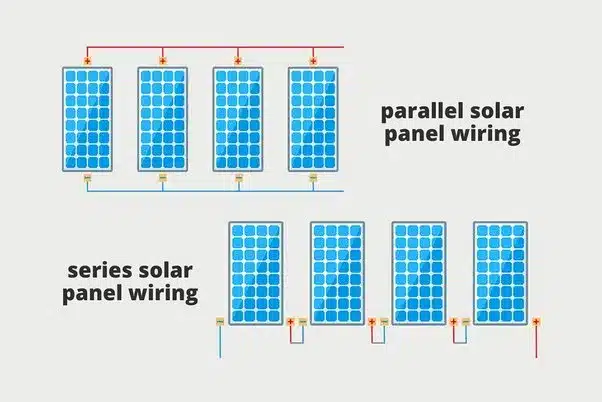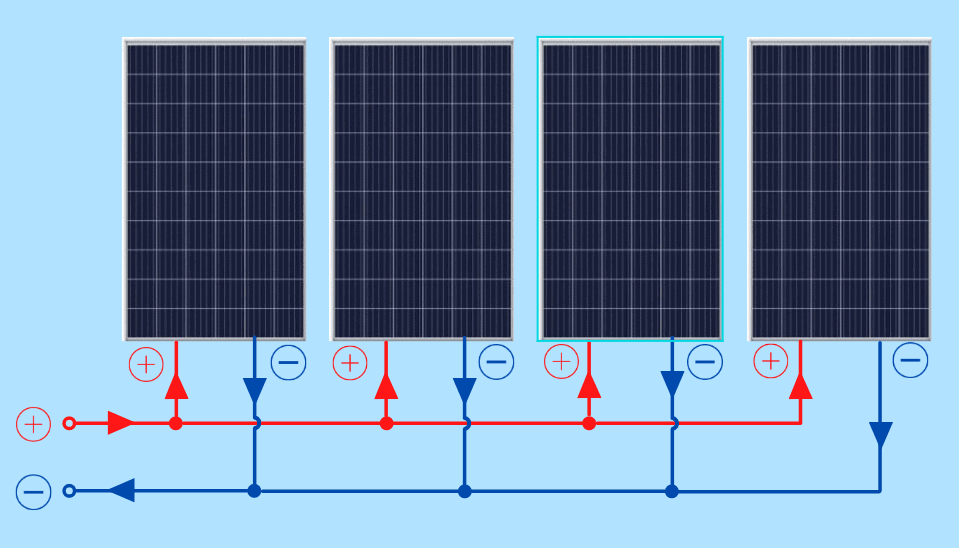How To Wire Solar Panels In Series And Parallel
“How to wire solar panels in series and parallel”
However, to maximize the efficiency and effectiveness of solar panels, it’s essential to understand how to wire them correctly. In this article, we will provide a detailed guide on how to wire solar panels in series and parallel, including the benefits and disadvantages of each configuration.
Introduction to Solar Panel Wiring
Before we dive into the specifics of wiring solar panels, it’s essential to understand the basics of solar panel electricity. Solar panels produce direct current (DC) electricity, which is then converted to alternating current (AC) electricity using an inverter. The wiring configuration of solar panels plays a crucial role in determining the overall efficiency and performance of the system.
Wiring Solar Panels in Series
Wiring solar panels in series involves connecting the positive terminal of one panel to the negative terminal of the next panel, and so on. This configuration is also known as a "string" configuration. The main advantage of wiring solar panels in series is that it increases the voltage of the system while keeping the current the same.
Benefits of Series Wiring:
- Increased Voltage: By connecting solar panels in series, the voltage of the system increases, making it easier to transmit power over long distances.
- Reduced Current: The current of the system remains the same, which reduces the risk of energy loss due to resistance in the wiring.
- Simplified Inverter Configuration: Series wiring simplifies the inverter configuration, as the inverter only needs to handle a single string of panels.

Disadvantages of Series Wiring:
- Reduced Flexibility: If one panel in the series configuration is shaded or malfunctioning, it can affect the performance of the entire string.
- Higher Voltage: Higher voltage systems can be more hazardous to work with, requiring specialized training and equipment.

Example of Series Wiring:
Let’s say we have three solar panels, each with a voltage of 12V and a current of 5A. If we connect them in series, the total voltage of the system would be 36V (12V x 3), and the current would remain the same at 5A.
Wiring Solar Panels in Parallel
Wiring solar panels in parallel involves connecting the positive terminals of all panels together and the negative terminals of all panels together. This configuration is also known as a "parallel string" configuration. The main advantage of wiring solar panels in parallel is that it increases the current of the system while keeping the voltage the same.
Benefits of Parallel Wiring:

- Increased Current: By connecting solar panels in parallel, the current of the system increases, making it easier to power larger loads.
- Improved Flexibility: If one panel in the parallel configuration is shaded or malfunctioning, it will not affect the performance of the other panels.
- Reduced Voltage: Lower voltage systems are safer to work with and require less specialized training and equipment.
Disadvantages of Parallel Wiring:
- Reduced Voltage: The voltage of the system remains the same, which can limit the distance that power can be transmitted.
- Increased Complexity: Parallel wiring requires more complex inverter configurations, which can increase the cost and complexity of the system.
Example of Parallel Wiring:
Let’s say we have three solar panels, each with a voltage of 12V and a current of 5A. If we connect them in parallel, the total current of the system would be 15A (5A x 3), and the voltage would remain the same at 12V.
Combining Series and Parallel Wiring
In many solar panel systems, a combination of series and parallel wiring is used to achieve the desired voltage and current. This configuration is known as a "series-parallel" configuration. By combining series and parallel wiring, you can create a system that balances the benefits of both configurations.
Example of Series-Parallel Wiring:
Let’s say we have six solar panels, each with a voltage of 12V and a current of 5A. We can connect two panels in series to create a string with a voltage of 24V and a current of 5A. We can then connect three of these strings in parallel to create a system with a voltage of 24V and a current of 15A.
Best Practices for Wiring Solar Panels
When wiring solar panels, it’s essential to follow best practices to ensure a safe and efficient system. Here are some tips to keep in mind:
- Use the Correct Wire Size: Use wire that is sized correctly for the system to minimize energy loss due to resistance.
- Keep Wire Runs Short: Keep wire runs as short as possible to minimize energy loss due to resistance.
- Use Fuses or Circuit Breakers: Use fuses or circuit breakers to protect the system from overcurrent conditions.
- Follow Safety Guidelines: Follow safety guidelines when working with electrical systems, including wearing protective gear and ensuring proper grounding.
Conclusion
Wiring solar panels in series and parallel is a critical aspect of designing an efficient and effective solar panel system. By understanding the benefits and disadvantages of each configuration, you can create a system that balances voltage and current to meet your specific needs. Whether you’re a homeowner or a business, following best practices for wiring solar panels can help you maximize the performance and safety of your system. Remember to always follow safety guidelines and consult with a professional if you’re unsure about any aspect of the installation process. With the right wiring configuration and a little planning, you can harness the power of the sun to reduce your reliance on fossil fuels and create a more sustainable future.
